Hull School Board Industrial School for Girls, Kingston upon Hull, East Riding of Yorkshire
The 1876 Education Act gave magistrates the power to place incorrigible truants, at the request of a local School Board, under detention at an Industrial School. The Hull School Board quickly took advantage of this provision and many truant boys were soon being sent to the independently run Ragged and Industrial Schools on Marlborough Terrace, Hull. In 1884, the School Board took over management of the Marlborough Terrace School which then formally changed its status to a Truant Industrial School.
At the same time, the School Board also decided to establish a new Industrial School for Girls, a facility that had been lacking in Hull since the Marlborough Street had become a boys-only establishment in 1876. The new institution was initially housed in temporary premises at Elmfield House, Providence Row, off Beverley Road, Hull, which were formally certified for use on October 25th, 1884, and came into practical use the following May.
An inspection of the School in September, 1885, reported that there were 14 girls under detention, all committed under the Education Act and effectively making the establishment a Truant School. The School had a good garden which was worked by boys from the Marlborough Street School. As was the norm at a girls' institution, the inmates did the housework, helped in the laundry and kitchen, and learn to sew and knit. The staff comprised the superintendent, Miss Babb; the schoolmistress, Mrs Twiddy; and an industrial teacher. It was also noted that a site had now been acquired at Park Avenue, Hull, on which to erect permanent premises for the School.
In 1886, Miss Reeve replaced Mrs Twiddy as schoolmistress.
The new building, whose construction cost £9,000, was formally certified for use on July 17th, 1888, with accommodation for 60 girls. An inspection in 1888 found the premises to be spacious and well-arranged, heated by hot-water pipes, and with large and airy dormitories. There was good laundry accommodation, and a large play-shed and play-yard. The School site is shown on the 1910 map below.
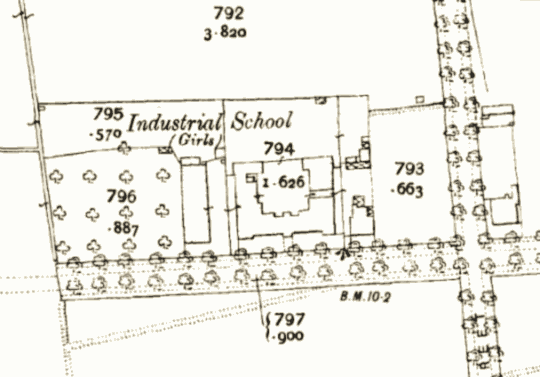
Industrial School for Girls site, Kingston upon Hull, c.1910.
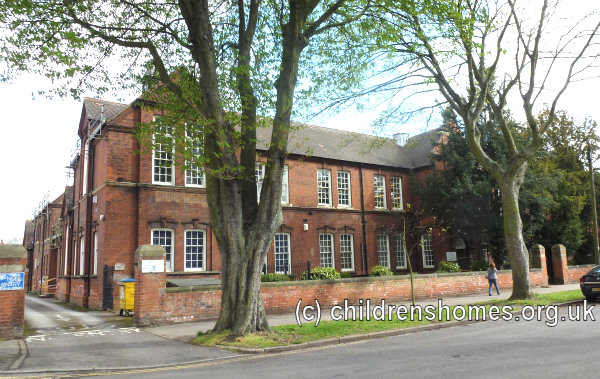
Former Industrial School for Girls from the south-west, Kingston upon Hull, 2013. © Peter Higginbotham
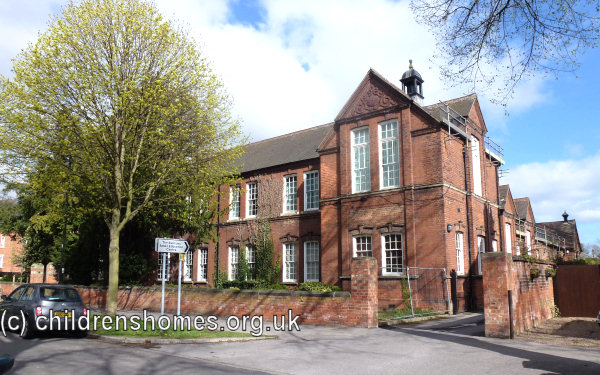
Former Industrial School for Girls from the south-east, Kingston upon Hull, 2013. © Peter Higginbotham
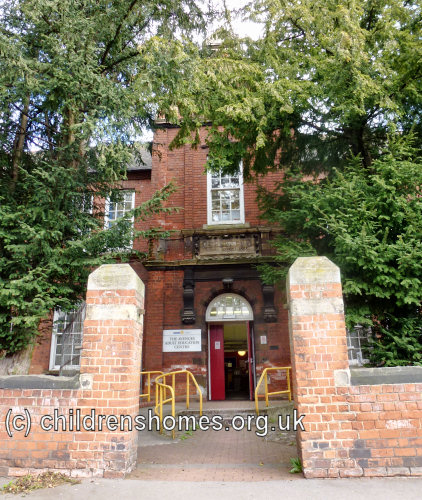
Former Industrial School for Girls entrance, Kingston upon Hull, 2013. © Peter Higginbotham
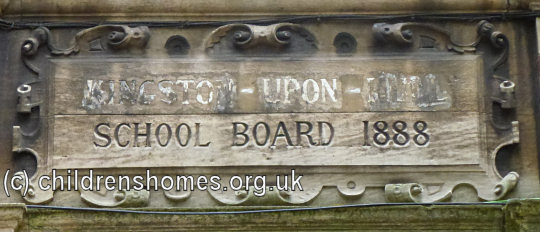
Former Industrial School for Girls date plaque, Kingston upon Hull, 2013. © Peter Higginbotham
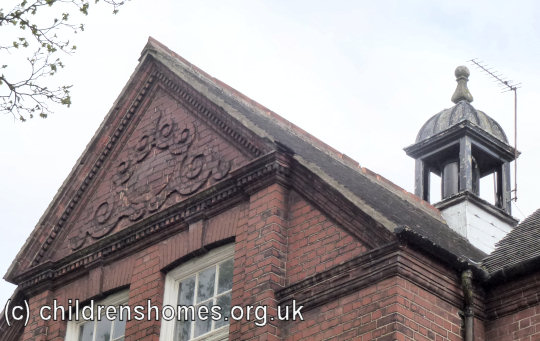
Former Industrial School for Girls, Kingston upon Hull, 2013. © Peter Higginbotham
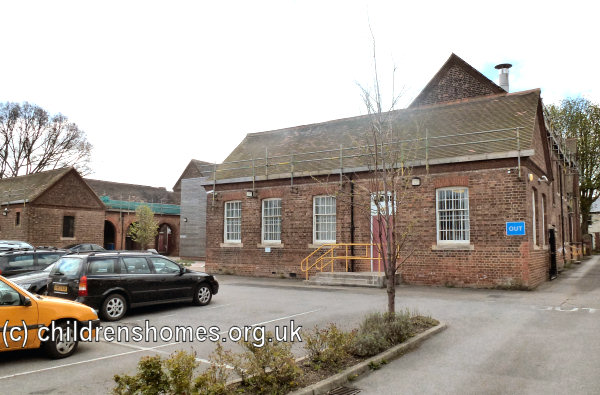
Former Industrial School for Girls from the north-west, Kingston upon Hull, 2013. © Peter Higginbotham
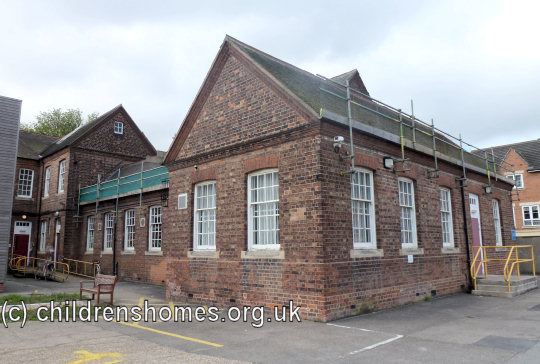
Former Industrial School for Girls from the south-west, Kingston upon Hull, 2013. © Peter Higginbotham
Miss Babb and Miss Reeve continued in their posts of superintendent and schoolmistress at the new site, although Miss Babb was succeeded by Miss Tyrer in 1889. As before, the girls were employed in house, kitchen and laundry work, and were taught to bake bread, sew and knit. They now made all their own clothes, and some of them were instructed in the use of the sewing machine. The School continued to have the character of a Truant School. Of the 55 inmates in August, 1890, 46 were Education Act cases and only 9 Industrial Act cases: Of the 55, 42 were in the School on their first admission, while 11 of the remainder had been licensed, and because of their failing to attend school regularly had been readmitted for a second time, and two for a third time.
In 1892, the School became caught up in a controversy after a fifteen-year-old inmate, named Florence Cawood, who had absconded from the institution on several occasions, was sent before magistrates by the School Board. She was sentenced to ten days in prison followed by committal to a Reformatory for four years. The case resulted in considerable local criticism of the School, and of what was viewed as its excessive harshness on a girl who had been due to leave the School in a few months time. The incident also caused considerable unrest amongst the other inmates and a significant rise in the number of absconding cases. Considerable problems were also caused by another girls named Christiana Pearson who was said to have attacked another inmate and also caused damage to the building and assaulted a Board official. She was eventually discharged from the School in January, 1893. The abscondments continued and in June, 1893, one girl, Hannah Cunningham, appeared in court after her eleventh escape. She was sentenced to 14 days in prison followed by four years in a Reformatory. In the wake of the problems, and with the support of the Inspector of Reformatory and Industrial Schools, new rules were sanctioned for the establishment allowing the use of "a small modicum of corporal punishment in extreme cases." Not surprisingly, there was also a change of officers at the School. In July, 1893, Miss Atkin took over as superintendent, and Miss Moss was appointed schoolmistress. The latter was replaced by Miss Wass in 1894.
At an inspection in August, 1894, it was reported that the general conduct had not been good, with a great many cases of absconding and insubordination; two cases of striking a mistress, three cases of absconding from situations; no less than 18 girls had absconded in one week. There had been a great many cases of bad language and insolence, and five of stealing. On the whole, however, the conduct was improving at the date of the inspection.
The 1896 inspection recorded that the staff now comprised: the superintendent, Mrs Isabel Mackie (or Mackay); schoolmistress, Miss Burgess; sewing-mistress, Mrs Anderson; gardener, cook and laundress. The training of the girls was for domestic service, and was said to be of a "severely plain description". The girls helped in the kitchen, but did not yet have special cookery lessons. The sewing was plain and substantial, and knitting was done by machine. In the laundry, the only fine work being done was for the officials, no outside work being taken in. There was little scope for waiting at table. Classroom performance was rated as 'very fair' to 'good'. History readers were used in Standard V and it was suggested that readers be provided in other subjects, such as geography. There was a good paved playground and a play-shed fitted with swings. Pets, such as rabbits, had recently been introduced, and had been much appreciated. There was a good piano. It was recommended that more be done in the way of drill and extension exercises. The library, which consisted largely of old school books, also needed improvement. The girls were generally allowed outside the school precincts once a week to walk or play, and were sent out on messages. The doctor visited weekly, and oftener if necessary. Health problems over the previous year had included one case each of scarlet fever, tonsillitis. anaemia, rheumatism, ringworm, whitlow, and chilblains, and two each of abscess, rash, and strumous glands. The scarlet fever was thought to have been contracted at church. The general conduct of the girls showed a marked improvement over previous years.
In 1898, a course of cookery lessons was given by one of the officers. Physical drill sessions were also introduced.
Miss M. Pierce succeeded Miss Burgess and schoolmistress in 1899. Table-cloths and crockery were now provided in the dining-room, giving it a more homely appearance and also providing a means of training the girls in some of the simple elements of domestic work. It was reported that there were problems in keeping the dormitories clear of fleas. The inspector suggested that the use of mattresses filled with straw or fibre was to blame and recommended that the beds be refilled with horse hair. He also proposed that that the girls be supplied with hair-brushes and a looking-glass. A mark system had now been introduced, with good conduct resulting in money rewards and other privileges.
In 1900, a strip of waste ground at the side of the building was turned into garden plots for the girls to cultivate. The number of inmates was now only 39, compared with 52 in 1896. That a School "under such capable superintendence, and with such power for good" should remain so low in numbers was a matter of regret to the inspector. The following year, he noted that the brown dress had become the de facto uniform at the School, and wondered if other colours which the girls could wear and learn of as being in good taste. He also suggested that the girls on licence in their situations might benefit from a visit from the superintendent. A day-trip to the seaside was now an annual event, although this was not a great break compared to the much longer summer holidays organised at many other Industrial Schools. In the winter, two concerts and a ventriloquial entertainment had been given by members of the Board.
Miss E. Hassock took over as schoolmistress in July 1903. Swedish drill had now been introduced. Pictures had been added to the dining-room walls.
In April, 1908, Miss E. Weatherill replaced Miss Hassock as schoolmistress. She in turn was replaced by Miss A. Nicholls on 10th April, 1909. On the same date, Miss Martha Parkinson took over from Miss Mackie as superintendent.
In 1910, the sewing room was enlarged and the following year was fitted out with comfortable chairs, a cutting-out table, and large cupboard. Back rests were fixed on the schoolroom desk. The 1911 inspection rated the classroom performance as 'good' in singing (staff notation), composition, recitation, mental arithmetic and geography. History readers were in use and a good course of object lessons had been given. All the girls could sew well and they now knitted their own stockings. A large number of girls could use the sewing-machine, and all the garments were cut-out by the older girls. Weekly cookery lessons were given by a visiting diplomatised teacher, and a little supplementary practice was provided in the kitchen. Conversational lessons were held in the laundry and notes were taken in the schoolroom. Marching and free exercises took place regularly. A few games had been organised, and advantage was taken of an adjoining field, where the girls had room for a "good romp." A Christmas tree, lantern lectures, and tea parties were enjoyed during the winter. In the summer the girls had numerous walks and a full-day visit to Hornsea.
On March 28th, 1912, the School's certified accommodation was increased to 75 places.
There was a gradual decline in the number of girls placed at the School and on November 7th, 1919, it was announced that the establishment had resigned its Industrial School certificate. The existing inmates were either licensed out or transferred to other institutions.
In August, 1920, the premises re-opened as an institution for "physically defective" children and was also known as the "Crippled Children's School". The building now houses an Adult Education Centre.
Records
Note: many repositories impose a closure period of up to 100 years for records identifying individuals. Before travelling a long distance, always check that the records you want to consult will be available.
- None identfied at present — any information welcome.
Bibliography
- Higginbotham, Peter Children's Homes: A History of Institutional Care for Britain's Young (2017, Pen & Sword)
- Mahood, Linda Policing Gender, Class and Family: Britain, 1850-1940 (1995, Univeristy of Alberta Press)
- Prahms, Wendy Newcastle Ragged and Industrial School (2006, The History Press)
Links
- None noted at present.
Except where indicated, this page () © Peter Higginbotham. Contents may not be reproduced without permission.


